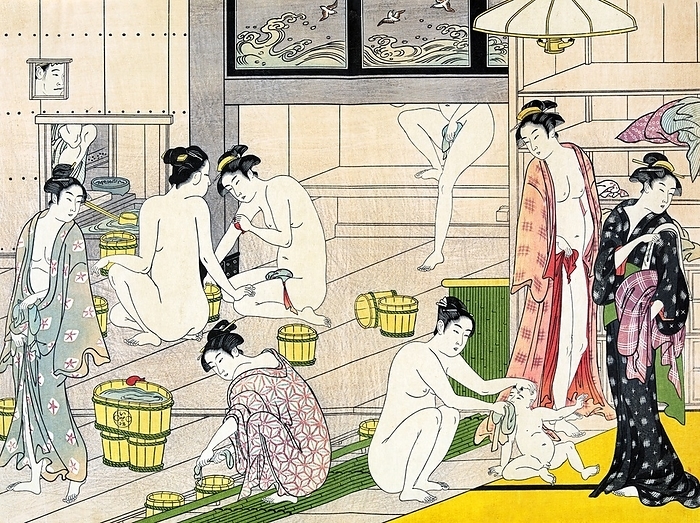
ED
Japan: 'Bathhouse women', Torii Kiyonaga (1752-1815)
Torii Kiyonaga (1752 - June 28, 1815) was a Japanese ukiyo-e printmaker and painter of the Torii school. Originally Sekiguchi Shinsuke, the son of an Edo bookseller, he Originally Sekiguchi Shinsuke, the son of an Edo bookseller, he took on Torii Kiyonaga as an art-name (gō). Although not biologically related to the Torii family, he became head of the group after the death of his adoptive father and teacher Torii
The master Kiyomitsu died in 1785; since his son died young, and Kiyotsune, Kiyonaga's senior, was a less promising artist, Kiyonaga was the obvious choice to succeed Kiyomitsu to leadership. However, he delayed this for two years, likely devoting time to his bijinga and realizing the immense responsibility that would fall on Thus, in 1787, he began organizing the production of kabuki Thus, in 1787, he began organizing the production of kabuki signboards and the like, which the school held a near monopoly on. He also began to train Kiyomitsu's grandson, Torii Kiyomine, who was to succeed <br/><br/>He also began to train Kiyomitsu's grandson, Torii Kiyomine, who was to succeed.
Kiyonaga is considered one of the great masters of the full-color print (nishiki-e) and of bijinga, images of courtesans and other beautiful women. He also produced a number of prints and paintings depicting Kabuki actors and related subjects, many of them promotional He also produced a number of shunga, or erotic images.
Details
ID
177779292
Collection
License type
Editorial
Photographer
Creation date
05-01-2022
Contact Aflo for all commercial uses.

More
Top Categories
